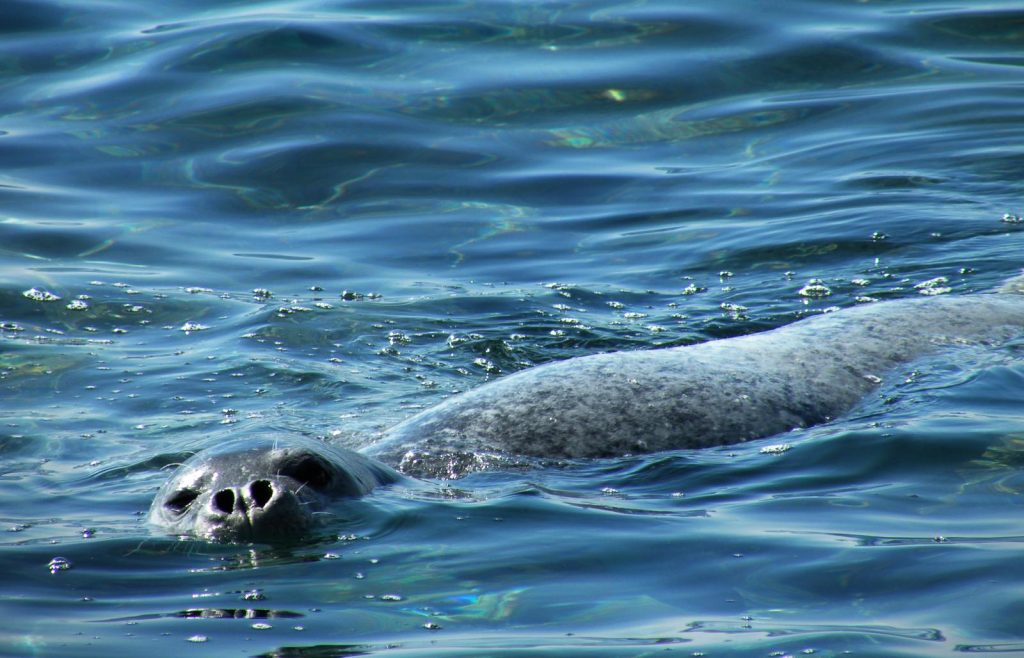Long before the time of Diocletian, the Mediterranean monk seal thrived amongst the sliver-shaped islands of the eastern Adriatic. Going back to the early 20th century, residents could observe these endearing pinnipeds congregating along the beaches of Southern Europe, North Africa, and Macaronesia. Regrettably, due to systematic hunting and increased human activity, the range of this once prosperous species has dwindled to only a few fragmented populations centered mainly around the Portuguese Island of Madeira, the west African peninsula of Cabo Blanco peninsula, and the Aegean Sea. However, as recently as 2021, monk seals sightings have been recorded in select locations throughout their former territory, including Croatia, providing conservationists with cautious optimism for the future of this maritime treasure.
Representing the sole member of the genus Monachus, Mediterranean monks are the rarest of the world’s 33 seal species. With an estimated global population of approximately 700, this once common coastal occupant has turned into Europe’s most critically endangered marine mammal. According to the IUCN, this species is classified as engangered, a classification last updated in 2015.
Alongside the Hawaiian monk seal, Mediterranean monks form an exclusive club within the Family Phocidae. While most members of this taxa have adapted to polar and subpolar climates, monk seals reside in more temperate regions, a trait that puts them in closer direct contact with humans.
Much like the people who share their subtropical home, monk seals have a taste fish and octopi, diving up to 200 m to find the eight-legged delicacy. This mutual love of seafood has been listed as a contributing factor of monk seal population decline. Hungry seals are drawn to fishing nets and the catch within, often becoming ensnared and drowning in the process. According to the Eastern Adriatic Monk Seal Project website, up to 46% of sub-adult seal deaths can be attributed to such accidental drowning events. Deliberate killings could be to blame for up to 50% of deaths in adults, possibly because of competition with fishermen. In the face of these shocking figures, the need for further conservation efforts is abundantly clear.
Prior to the industrial revolution and slightly after, open beaches were the main birthing ground for Mediterranean monk seals. Over the past century, due to increased tourism and industry along the coast, female monk seals have left their former pupping terrirory, instead seeking out undersea caves where they can give birth and rear pups without human disturbances. The 9–11-month gestation period contributes significantly to the delayed recovery of monk seal populations, with adults only baring only a single pup per reproductive cycle.
Despite these threats, help is on the horizon. National governments and NGOs have taken action to repopulate regions where the pinnipeds have been wiped out. In Croatia, monk seals have been safeguarded under the Nature Protections Act since 2003, instating fines of 100,000 kuna to anyone caught killing a monk seal. Moreover, the Biom Association, one of Croatia’s largest nature conservation NGOs, has teamed up with partners from Greece, Montenegro, and Albania to create the previously mentioned Eastern Adriatic Monk Seal project. The goal of this collaboration is to identify suitable habitats as well as obstacles that obstruct the pathway towards possible reintroduction of the species.
The case of the Mediterranean monk seal provides us with a stark reminder of the impact of human actions on the environment. Thanks in part to strong shows on environmental stewardship by local leaders, early indicators of seal population recovery are optimistic. However, these are only the first steps on the much broader issue of international systemic neglect of the natural world. Many consider Croatia a paradise on earth, but to coninue earning this title locals must protect all those who call it home, including those with flippers.
Lifestyle: For more, check out our lifestyle section.








